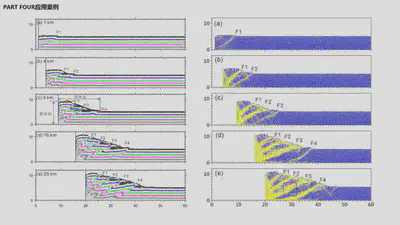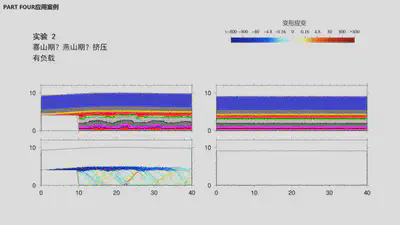Discrete Element-Based Numerical Simulation Experimental Techniques for Tectonic Deformation (Conference Report) - The 12th National Academic Conference on Petroleum Geology Experimental Technology (November 13, 2020)
Introduction to the 12th National Academic Conference on Petroleum Geology Experimental Technology
Petroleum geology experimental technology plays a crucial role in oil and gas exploration and development. In recent years, China’s oil and gas exploration and development have faced new challenges, raising higher requirements for the development of petroleum geology experimental technologies. To further promote innovation and development in China’s petroleum geology experimental technology and enhance its role in oil and gas exploration and development, the Petroleum Geology Professional Committee of the Petroleum Society of China, the Petroleum Technology Equipment Professional Committee of the Petroleum Society of China, the Petroleum Geology Professional Committee of the Geological Society of China, and the Standardization Committee for Petroleum Geology Exploration jointly initiated the “12th National Academic Conference on Petroleum Geology Experimental Technology,” tentatively scheduled for November 11-13, 2020. The specific details of the conference are as follows:
一、Organizers:
- Petroleum Geology Professional Committee of the Petroleum Society of China
- Petroleum Technology Equipment Professional Committee of the Petroleum Society of China
- Petroleum Geology Professional Committee of the Geological Society of China
- Standardization Committee for Petroleum Geology Exploration
二、Hosts:
- China Petroleum Exploration and Development Research Institute
- Key Laboratory of Petroleum Geochemistry, China Petroleum
- Key Laboratory of Oil and Gas Reservoirs, China Petroleum
- Key Laboratory of Basin Tectonics and Hydrocarbon Accumulation, China Petroleum
- Key Laboratory of Continental Shale Oil and Gas Accumulation and Efficient Development, Ministry of Education
三、Conference Theme and Topics
- Conference Theme: New Technologies, New Methods, and Applications in Petroleum Geology Experiments
- Topics:
- New Technologies, New Methods, and Applications in Geochemical Experiments
- New Technologies, New Methods, and Applications in Reservoir and Stratum Experiments
- New Technologies, New Methods, and Applications in Oil and Gas Accumulation Experiments
- New Technologies, New Methods, and Applications in Unconventional Oil and Gas Geological Experiments
- Development Geology, Experimental Equipment, Big Data, and Experimental Management
Report Title: Discrete Element-Based Numerical Simulation Experimental Techniques for Tectonic Deformation
-
Session 5: Development Geology, Experimental Equipment, Big Data, and Experimental Management
-
Time: November 13, 2020, Friday, 8:40-8:55
-
Location: Conference Hall, 4th Floor, Building 11, Jiangxi Provincial Party Committee Binqiang Hotel, Nanchang City, Jiangxi Province
-
Presenter: Li Changsheng, China Petroleum Exploration and Development Research Institute
-
Content Summary:
- Research Background: The significance of tectonic simulation;
- Theoretical Methods: Discrete element theory;
- Software Development: Development of the discrete element software VBOX;
- Application Cases:
- Quantitative analysis methods based on discrete elements
- Extensional fault-propagation folds
- Discrete element numerical simulation of the knee fold in the Shuangyushi Block of Northwestern Sichuan
- Conclusions
- Teaching: Helps students understand the tectonic process and enhances their interest in structural geology.
- Research: Quantitatively analyzes the main controlling factors of tectonic deformation and clarifies the timing of tectonic evolution.
- Optimizing Tectonic Interpretation Schemes: Limited by seismic data accuracy and geological complexity, it serves as an experimental method to guide and optimize tectonic interpretation plans.
- Shuangyushi: Load suppression of fault development, knee folds formed during the Yanshanian or Himalayan orogeny.
-
Abstract
Numerical simulation, along with theoretical analysis and scientific experiments, forms one of the three pillars of modern scientific research. In the field of tectonic geology, numerical simulation has become an important tool ranging from the dynamics of supercontinent rifting to the geometric and kinematic studies of basin tectonic deformation.
In recent years, with the development of discrete element theory and computer technology, the Discrete Element Method (DEM) (Cundall and Strack, 1979) has been widely applied to tectonic simulations at different scales. Compared to traditional sandbox modeling methods, discrete element methods can more precisely control experimental boundary conditions and quantitatively analyze tectonic deformation processes, aiding in a deeper understanding of the mechanical properties and deformation mechanisms at the micro-scale. The discrete element method employs discrete particles to represent rocks that conform to real physical and mechanical properties, effectively analyzing problems with numerous discontinuities. Since the 1990s, DEM has been widely used to address tectonically related geological issues. For example, it has been used to analyze the cracking mechanisms of sedimentary cover layers during salt piercement, study the effects of cohesion within strata on tectonic morphology and stress-strain distribution (Morgan, 2015), reveal changes in strain distribution and fracture generation patterns in the deformation process of décollements under horizontal compression, clarify the dynamic evolution in layered extensional superposition during basin evolution, and analyze the inversion tectonic characteristics of the Maodong fault zone as a graben basin under current regional stress and the reverse control of normal faulting, revealing the fault propagation and connectivity processes during the development of pure strike-slip basins, and discussing the controlling factors and mechanisms of the salt structures in the western Kuqa foreland thrust belt (Li Changsheng, 2019).
Schreurs et al. (2016) compared compressional tectonic experiments from multiple physical modeling laboratories worldwide, showing that under the same experimental conditions and methods, different experimental simulation outcomes cannot be entirely consistent. However, under the same initial conditions (initial particle positions and radii) and boundary conditions, the discrete element results consistently exhibit reproducibility. Furthermore, the material properties of DEM can be calibrated through microparameters, and a variety of materials can be selected. All variables can be monitored in real-time, such as displacement, stress, strain, velocity, and energy. In physical simulations, deformation needs to be observed through image analysis (such as Particle Image Velocimetry), laser scanning (mini laser altimetry), and computed X-ray tomography scans. Without these devices, the only way to observe model deformation is to photograph the side of the model or cut the model to inspect internal deformation. In contrast, discrete elements can provide all information for each deformation stage, allowing calculations of the stress-strain fields in the system. Moreover, with the same initial model, consistent simulation results facilitate the study of single-factor variables (such as compression rates, paleouplift, pre-existing faults, etc.).
In summary, the discrete element numerical simulation method has obvious advantages in the quantitative analysis of tectonic morphology, fault prediction, and stress-strain. Many scholars have introduced discrete elements into simulations of tectonic deformation; however, the analysis has often focused on qualitative interpretations of structural geometries. This paper combines a typical compressional tectonic discrete element numerical simulation experiment to simulate the formation process of tectonics under horizontal compression and to analyze the changes in stress and strain distribution and fracture generation patterns during the deformation process. The results indicate that: (1) Fractures and faults are closely related; a large concentration of fractures in a localized area is the precursor to fault formation. (2) Volumetric strain can characterize fracture types (tensile or compressive), while deformation strain can differentiate between forward and reverse thrust faults. (3) The magnitude of average stress is positively correlated with topographic relief, with maximum shear stress accumulating at new faults about to form until the new fault forms, after which the shear stress begins to dissipate and continues to accumulate at the next new fault about to form. These findings demonstrate the significant potential of the discrete element method in stress-strain analysis and fracture prediction research.








Acknowledgments
The stress-strain analysis code has been modified from the computing script provided by Professor Julia K. Morgan at Rice University; special thanks to her.
References
[Li Changsheng (2019) Quantitative Analysis and Simulation of Tectonic Deformation in Fold-Thrust Belts Based on Discrete Elements. **PhD Thesis**. Nanjing University.](http://t.cn/Ai9ruJY5) **Recommended Download** [Latest Revised Edition](https://pan.baidu.com/s/1s7qJXCUb2tP6jPkHixge6w) Extraction Code `dgyc`Liang Han, Ran Qi, Di Guidong, et al. (2019) Discovery of the Knee Fold in the Qixia Formation of the Shuangyushi Block in Northwestern Sichuan and its Significance for Oil and Gas. Natural Gas Exploration and Development, 42(04): 1-7.
Cundall P A, Strack O D. 1979. A discrete numerical model for granular assemblies. Geotechnique, 29: 47-65. [Morgan JK (2015) Effects of cohesion on the structural and mechanical evolution of fold and thrust belts and contractional wedges: Discrete element simulations. **Journal of Geophysical Research: Solid Earth** 120:3870-3896.](http://onlinelibrary.wiley.com/doi/10.1002/2014JB011455/full) Schreurs G, Buiter S J, Boutelier J, et al. Benchmarking analogue models of brittle thrust wedges. Journal of structural geology, 2016,92:116-139.Translator: Zhu Suqin